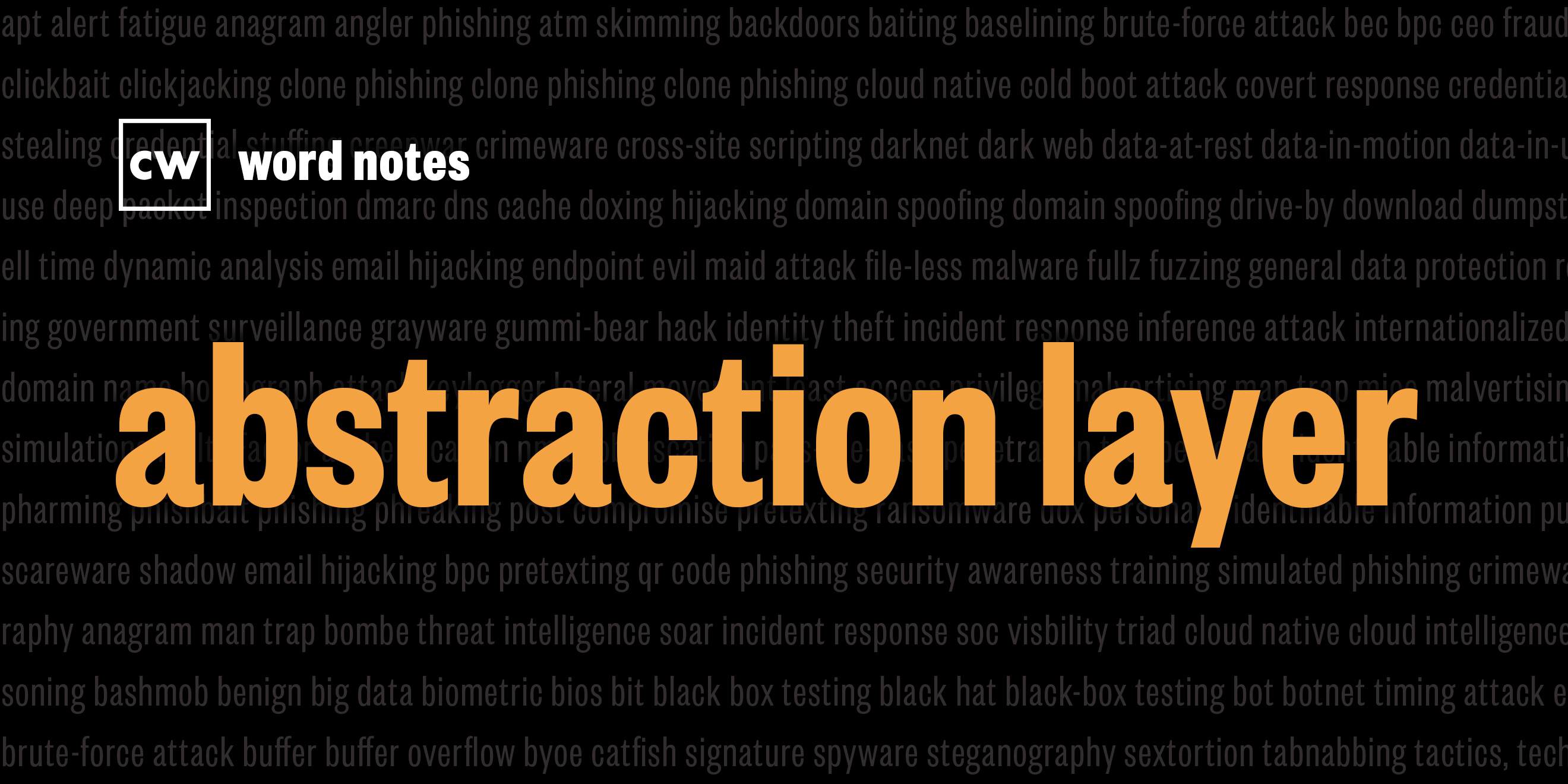
Abstraction layer (noun)
Rick Howard: The word is: Abstraction layer.
Rick Howard: Spelled: Abstraction as in the removal of technical details that are not specifically relevant to the task at hand and layer, as in a step in a hierarchy dependent on the steps below it.
Rick Howard: Definition: A process of hiding the complexity of a system by providing an interface that eases its manipulation.
Rick Howard: Example sentence: The OSI model uses seven abstraction layers to describe the workings of a networking system.
Rick Howard: Origin and context: An abstraction layer is a way of translating the functions of a computing system for human interaction. Lower levels of abstraction are more closely linked to the physical operations of a computer, while higher ones are easier for a human to understand. In coding, for example, a program written in a lower-level language will most likely run more efficiently since it's more closely tied to the machine language that runs directly on the hardware.
Rick Howard: A program written in a higher-level language though, will run more slowly, but can be developed in a fraction of the time it would take to write the same program in a lower-level language. Máté Safranka, in an article for Medium, compares this to driving a car: you don't need to know the inner workings of the engine, you just need to hit the gas pedal and turn the steering wheel. If you take a cab, you create another layer of abstraction, since you simply tell the driver where to go. On a computer, the data abstraction layer sits between the operating system and the physical computer. You click the save button and the operating system handles the details of how to say the document on the system.
Rick Howard: Nerd reference: In 2018, Codexpanse, a company that provides programming and computer science classes gave a concise, precise, and crystal clear explanation of Abstraction in computer science.
Codexpanse Narrator: The history of computing is the history of adding levels of abstraction. We've started with those electrons, flowing through relays, then made them complex in so that we had to hide them behind an illusion of ones and zeros. Then it became unbearable, so we had to add a layer of normal numbers and text. Programming was still a rough field, even though we had words and numbers, programmers had to think about memory and CPU cycles. So another layer was added. It allowed to work without worrying about all the little details of computer hardware and so on and so forth. Seemingly infinitely, layered pie of obstructions allows for video, music, messaging, calls, apps, smartphones, all built on top of illusions useful, but illusions, nevertheless.
Rick Howard: Word Notes is written by Tim Nodar, executive produced by Peter Kilpe, and edited by John Petrik and me, Rick Howard. The mix, sound design, and original music have all been crafted by the ridiculously talented Elliott Peltzman. Thanks for listening.

